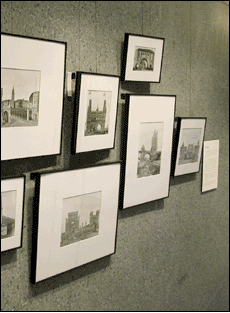| |
| |
|
|
|
|
|
|
|
|
|
|
|
|
|
|
“If
the last operas of Mozart were criticized as 'noise, not music' by the Vienna
critics of the time, if the French painters of the beginning of the century were
called beasts, if Finnegans Wake is still mostly unread, why should the message
of structural and mechanical systems enjoy a different destiny?”
|  Bridges over the Elbe, Moselle, Rhine, Vistula, and Waal from Georg C. Mehrtens, A Hundred Years of Bridge Building (1900) Courtesy The New York Public Library, Science, Industry and Business Library Chicken&Egg Public Projects | During
the nineteenth century, civil engineers in Europe designed bridge frameworks that
still astonish. These new types of structures sometimes included Gothic, Romanesque,
and Renaissance gateways at the ends. Why? Traditional forms of beauty confirmed the political strength of the government behind transportation infrastructure. Reproductions of castles and churches allowed industrialists to make themselves appear to be part of the established power structure. Historical art forms gave a distinctive look to a high-tech product that, in comparison to old-style bridges, may have seemed naked. Art put the stamp of “civilization” on the work of wild civil engineers. Opposing viewpoints developed: some critics saw the application of historical style as dishonest, and others thought it was beautiful. Familiar forms reassured people in the face of scary technological change. |
Privacy Policy | Rules and Regulations | Using the Internet | Website Terms and Conditions | © The New York Public Library
|